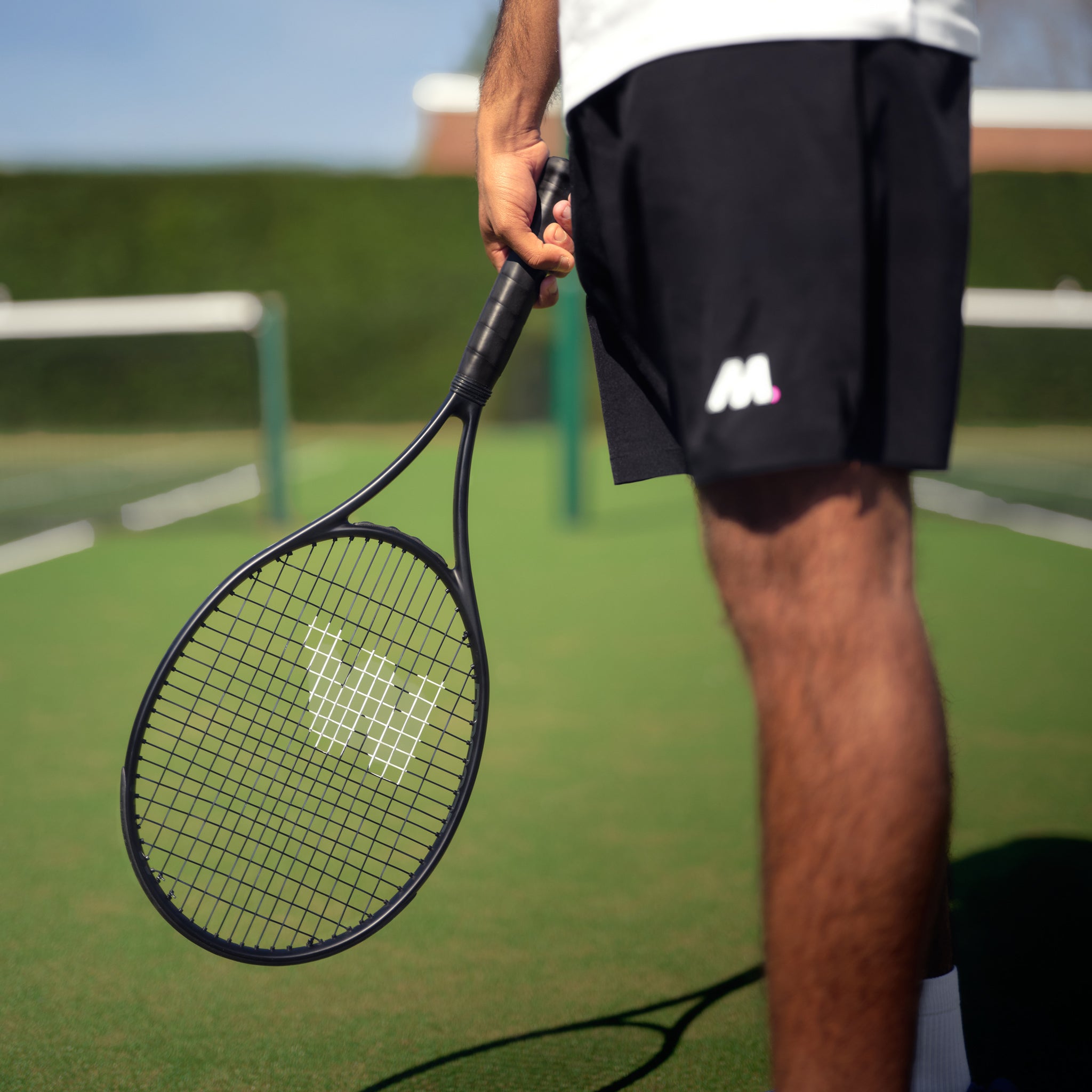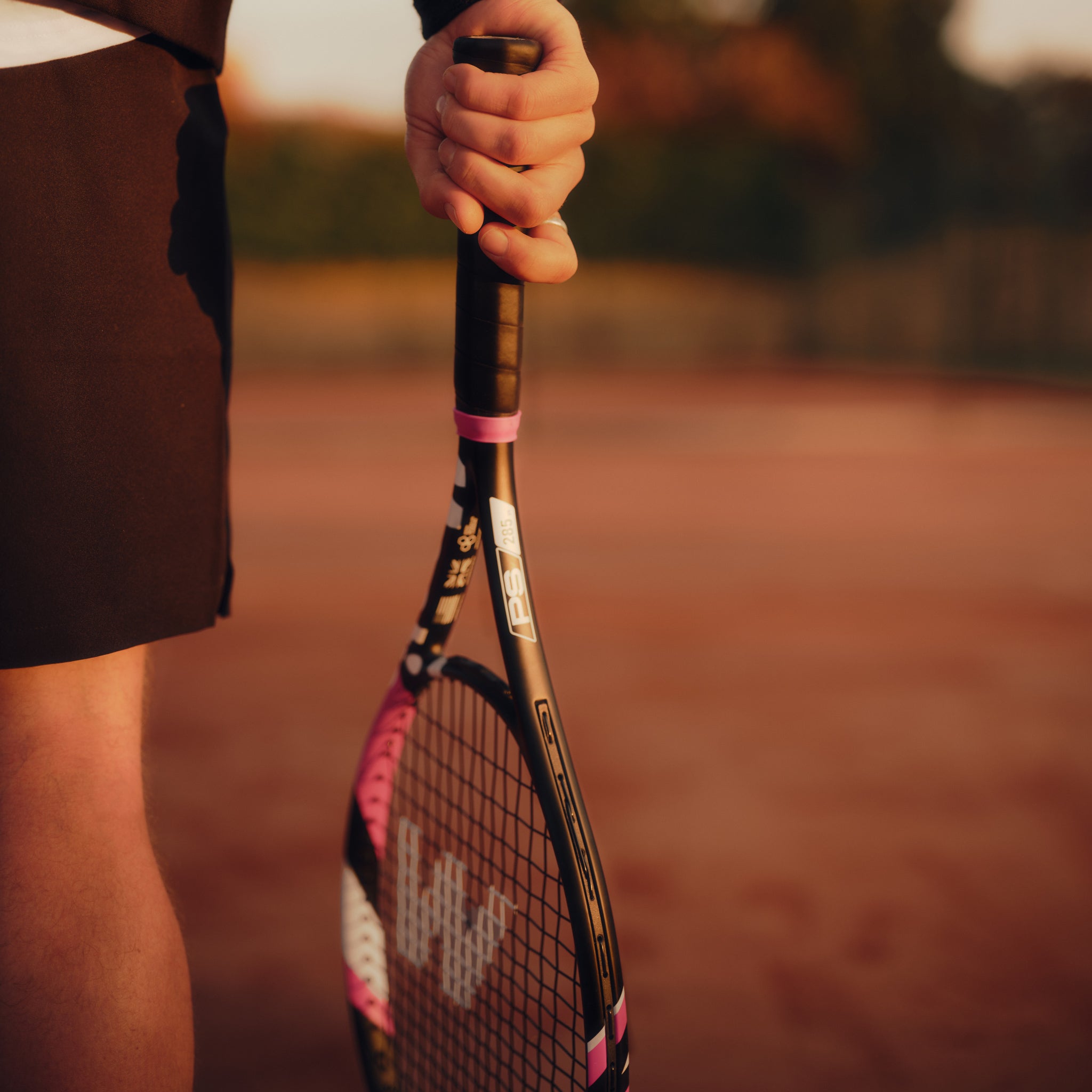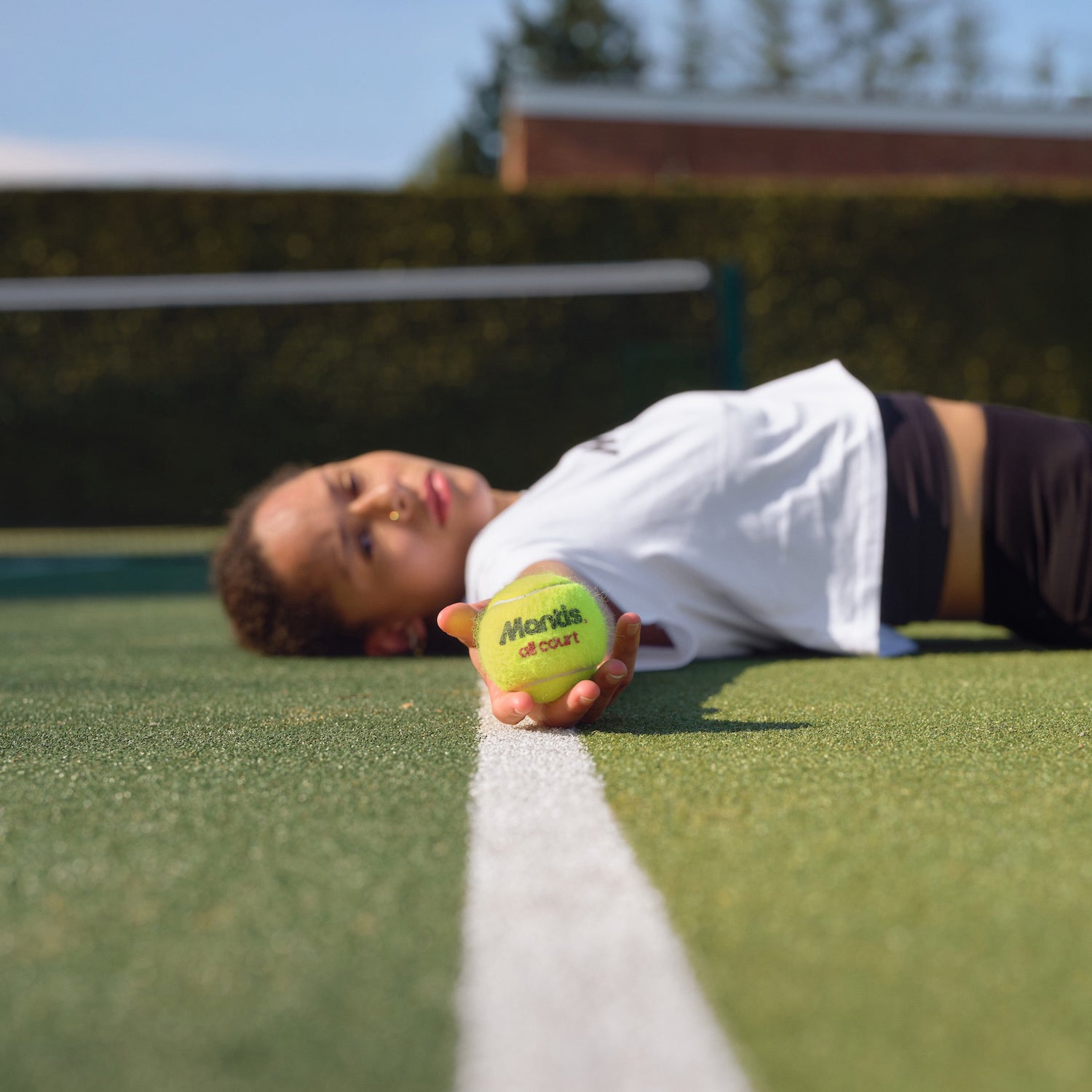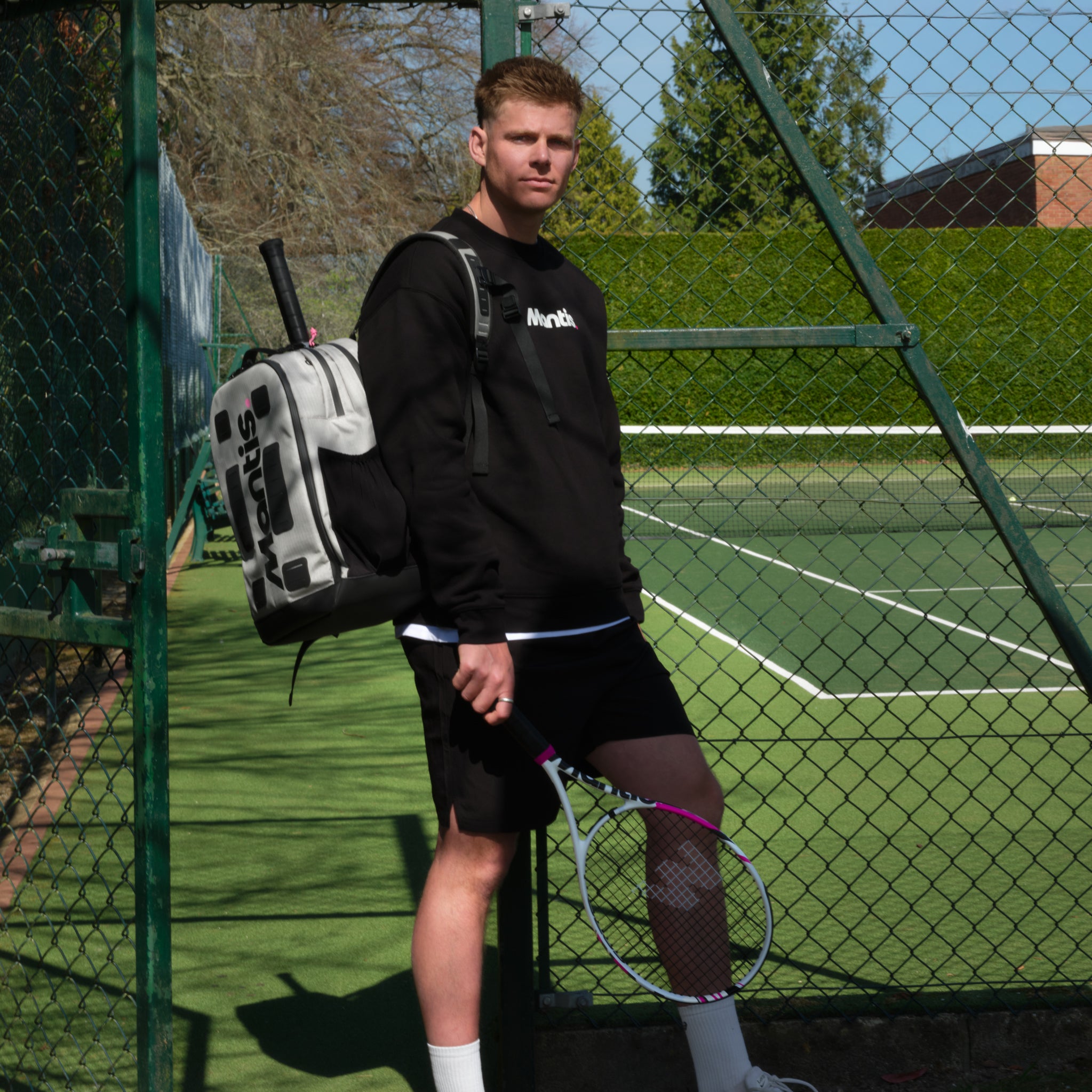
Welcome to the Mantis guide on mastering the net. The volley is a game-changer, turning defensive rallies into point-winning attacks. For players looking to add an aggressive edge to their game, incorporating effective tennis volley drills is non-negotiable. At Mantis, we believe that precision-engineered equipment, like our performance tennis strength training programmes, deserves to be paired with equally precise training. This commitment to on-court excellence requires more than just physical skill; a player must also build mental toughness to execute crucial shots under pressure.
To help you develop a formidable net presence, we have curated a list of essential drills that focus on improving technique, sharpening reflexes, and enhancing tactical application. Each drill is broken down into clear, actionable steps designed for players at various levels. Whether you are practising against a wall or with a partner, these exercises will provide the structure needed to transform your volley from a simple block into a decisive, point-ending weapon. This guide will provide the framework to help you step forward with confidence, control the net, and dominate points with aggressive, well-placed volleys. We'll explore everything from basic ball control to advanced reaction exercises.
1: The Foundational Ball Toss Volley
This drill is the cornerstone of effective net play and is a staple in many of the Mantis coaching programmes we observe. It strips away the pressure of a fast-approaching shot, allowing players to concentrate purely on developing correct form. The simplicity of this exercise makes it one of the most essential tennis volley drills for building the muscle memory required for reliable net play. It’s perfect for beginners establishing their technique or for advanced players looking to refine and correct minor flaws.
How it Works
The setup is straightforward. A player stands at the net in a ready position, while a coach or partner stands on the same side, approximately 8-10 feet away near the service line.
- The feeder gently tosses balls by hand towards the player.
- The tosses should vary in height (low, medium, high) and position (forehand, backhand, body) to simulate different match scenarios.
- The player focuses on executing a technically sound volley for each toss, aiming for a specific target area on the other side of the court.
Key Insight: The goal here isn't power, but precision and form. The slow pace of the tossed ball allows the player to consciously focus on keeping a stable racquet face, using a compact "punching" motion, and stepping forward into the shot with the opposite foot.
Why This Drill is Essential
This foundational drill isolates the volleying motion without the added complexity of reacting to a fast, spinning ball. By removing the variable of an opponent's shot, players can dedicate their full attention to the biomechanics of the volley.
We recommend this drill for:
- Building Confidence: It provides a high success rate, which helps players become more comfortable and aggressive at the net.
- Technique Refinement: It’s an ideal environment to work on specific elements like the split-step, keeping the head still, or maintaining a firm wrist through contact.
- Warm-ups: It serves as an excellent way to activate the correct muscles and groove your volleying motion before moving on to more dynamic drills or match play.
2. Wall Volley Practice
Often overlooked but incredibly effective, wall practice is a classic solo exercise that sharpens reflexes and builds incredible ball control. It’s one of the most accessible tennis volley drills available, requiring nothing more than a player, a ball, a racquet, and a solid wall. We’ve seen this simple yet powerful drill used by everyone from self-taught players in urban areas to seasoned competitors looking for a quick way to hone their hand-eye coordination and racquet face awareness.
How it Works
The brilliance of this drill lies in its simplicity. The player stands approximately 6-8 feet from a flat, solid practice wall, adopting a ready position.
- Start by feeding the ball against the wall to initiate a continuous rally of volleys.
- The objective is to keep the rally going for as long as possible, alternating between forehand and backhand volleys.
- The player must react quickly, as the wall returns the ball at the same pace it was hit.
Key Insight: The focus is on rhythm and control, not power. This drill forces you to use a very short, compact swing. A long backswing will make it impossible to prepare for the next shot in time, teaching you the efficient, punching motion essential for effective net play.
Why This Drill is Essential
This drill is the ultimate test of consistency and quick reactions. The wall provides immediate, unforgiving feedback; if your technique is sloppy, you won't be able to sustain the rally. It’s a fantastic way to develop the feel for controlling the ball with minimal movement.
We recommend this drill for:
- Developing Rapid Reflexes: The short distance means less reaction time, forcing your hands to become quicker and more instinctive.
- Improving Racquet Control: To maintain a rally, you must precisely control the angle and firmness of your racquet face on every single shot.
- Solo Practice: It's the perfect drill for when you don't have a partner, allowing for high-volume repetition in a short amount of time. It's an excellent addition to any tennis fitness programme.
3. The Cross-Court Volley Drill
Once foundational technique is established, it's crucial to apply it in a more dynamic context. This drill elevates the challenge by introducing movement, timing, and strategic placement, making it a cornerstone of the intermediate and advanced Mantis coaching syllabuses we have developed. It is designed to simulate the rapid exchanges common in doubles play, forcing players to control their shots while hitting precise angles under pressure. This is one of the most effective tennis volley drills for developing the specific skills needed to dominate the net.
How it Works
This drill requires two players, positioned at the net on opposite sides of the court. Both players should stand around the centre of their respective service boxes.
- Player A initiates a rally by feeding a cooperative volley cross-court to Player B.
- The players then sustain a continuous rally, hitting only cross-court volleys to each other.
- The focus is on maintaining control and depth, aiming to land the ball consistently within the opponent's service box.
Key Insight: The primary objective is consistency, not outright power. Players should concentrate on using their feet to get into the optimal position for each shot, keeping the volley compact, and guiding the ball to a specific target. This teaches you to absorb pace from your opponent’s shot and redirect it with precision.
Why This Drill is Essential
The Cross-Court Volley Drill bridges the gap between static practice and live match play. It forces players to handle incoming pace and spin, make quick decisions, and execute shots while moving, which are all vital components of successful net play, particularly in doubles.
We recommend this drill for:
- Developing Angle Control: It’s superb for learning how to create and control sharp angles, a key tactic for pulling opponents off the court.
- Improving Footwork and Balance: The need to constantly adjust to your partner's shots refines your split-step and balance, ensuring you are prepared for every volley.
- Doubles Simulation: It perfectly replicates the positioning and shot patterns of a cross-court volley exchange in a doubles match, preparing you for high-pressure situations.
4. Reaction Volley Drill
This high-octane drill is designed to sharpen a player's reflexes to a razor's edge. Often seen in high-performance training centres, it forces players to handle rapid-fire shots with minimal preparation, simulating the intense pressure of a point-blank exchange at the net. It's one of the most effective tennis volley drills for developing the quick hands and instinctive blocking needed to survive and thrive in fast-paced doubles rallies or when an opponent rips a passing shot directly at you.
How it Works
A player stands just behind the service line, closer to the net than in most drills. A coach or feeder stands on the other side of the net, often inside the service box, with a large basket of balls.
- The feeder rapidly fires balls directly at the player, alternating between the forehand, backhand, and body.
- The pace is quick, leaving no time for a traditional backswing or footwork preparation.
- The player’s objective is simply to react, get their racquet on the ball, and block it back over the net.
Key Insight: The emphasis here is on survival and reaction, not technique or power. The goal is to shorten the volleying motion to its most compact form- a simple block or punch. This trains the eyes and hands to work in unison under extreme time pressure.
Why This Drill is Essential
This drill specifically targets the panicked moments in a match where technique often breaks down. By repeatedly exposing a player to this high-speed scenario in a controlled environment, it builds the neural pathways for faster, more automatic responses.
We recommend this drill for:
- Improving Reflexes: It’s the ultimate test of hand-eye coordination and reaction speed, crucial for any serious net player.
- Handling Power: It teaches players to absorb pace from an opponent's shot using a firm wrist and a stable racquet face, rather than trying to generate their own power.
- Doubles Prowess: This is a core drill for doubles specialists who frequently find themselves in rapid-fire exchanges at the net.
5. Approach and Volley Drill
This drill transitions players from baseline warriors to all-court threats, making it a crucial component in any advanced training regimen. It bridges the gap between hitting a strong groundstroke and finishing the point at the net, a sequence fundamental to aggressive, attacking tennis. Our Mantis coaches frequently use this drill to develop a player’s transitional game, transforming a defensive situation into an offensive one. Mastering this sequence is one of the most rewarding steps in learning to dominate points.
How it Works
This drill simulates a common match play pattern where a player forces a short ball and moves forward to capitalise. A coach or feeder stands on the opposite side of the court, typically around the service line.
- The feeder sends a short, relatively weak ball to the player, who is positioned on their own baseline.
- The player moves forward, striking an approach shot (down the line or cross-court) with the intention of hitting it deep and putting the feeder under pressure.
- Immediately after the shot, the player continues their forward momentum towards the net, performing a split-step just before the feeder makes contact with their reply.
- The player then executes one or two volleys to win the point. The first volley is often aimed deep to maintain pressure, while the second is typically angled for a winner.
Key Insight: The quality of the approach shot dictates the difficulty of the volley. A deep, well-placed approach shot will force a weaker reply from your opponent, setting you up for a much simpler volley. The focus is on the seamless flow from approach to net position.
Why This Drill is Essential
This is one of the most practical tennis volley drills because it directly mirrors a point-winning strategy. It teaches players not just how to volley, but when to come to the net and how to set up the volley for success.
We recommend this drill for:
- Developing an Attacking Mindset: It encourages players to recognise opportunities to move forward and take control of the point.
- Improving Footwork and Positioning: The drill forces players to master the footwork required to move from the baseline to the net efficiently, including the critical timing of the split-step.
- Building Tactical Awareness: Players learn to connect their shots, understanding how a strong approach shot creates an easier volley opportunity, which is a cornerstone of serve-and-volley and aggressive baseline styles.
6. Low Volley Drill
Handling a volley below the height of the net is one of the most demanding shots in tennis, yet mastering it can turn a defensive scramble into a neutral or even offensive play. This specialised drill isolates this very scenario, forcing players to develop the technique and physical conditioning needed to handle low balls with control. It is a critical component in many advanced training regimens, particularly for doubles players who frequently encounter shots aimed at their feet. The strength and flexibility required for this drill are heavily emphasised in dedicated tennis fitness plans, and you can learn more about how tennis strength training directly improves this shot.
How it Works
The drill requires a player at the net and a feeder on the opposite side, positioned around the service line. The feeder's goal is to consistently deliver balls that will drop below the net height by the time they reach the player.
- The feeder hits or feeds balls softly, aiming for the player's shoelaces or ankles.
- The player starts in a low, athletic ready position, anticipating the low ball.
- Upon seeing the feed, the player executes a split-step and then moves to the ball, focusing on bending their knees and getting their body down to the ball’s level.
- The volley is executed with an open racquet face to lift the ball back over the net, aiming for depth to push the opponent back.
Key Insight: The common mistake is to simply drop the racquet head. Instead, the focus should be on lowering your entire body by bending the knees. This keeps your head, hands, and racquet in a stable alignment, allowing you to use your legs to generate upward momentum and “scoop” the ball with control.
Why This Drill is Essential
This is one of the most important tennis volley drills because it builds the muscle memory for a shot that often causes unforced errors. It directly addresses the technical and physical challenges of the low volley, a shot that frequently determines the outcome of a point at the net.
We recommend this drill for:
- Developing Touch and Feel: It teaches players to use an open racquet face and a soft "catching" motion to control the ball's trajectory.
- Improving Footwork and Balance: Successfully executing low volleys demands excellent balance and the ability to get down low quickly, which this drill reinforces.
- Building Defensive Skills: It gives players the confidence and technical ability to neutralise low passing shots, keeping them in the point when under pressure.
7. Overhead and Volley Combination Drill
This advanced drill is crucial for developing the all-court awareness needed in competitive play and is a key feature in many of the Mantis coaching programmes we design for tournament players. It forces a player to transition seamlessly between an aggressive overhead smash and a controlled volley, simulating the high-pressure sequences often seen in doubles or during a determined net rush. This exercise is one of the most effective tennis volley drills for improving reaction time and positional discipline, preparing players for the unpredictable nature of a point at the net.
How it Works
This drill requires a player at the net and a feeder (or another player) at the baseline. The goal is to create a continuous, alternating sequence of shots that test footwork and shot selection.
- The feeder starts by hitting a high lob over the net player's head.
- The net player must move back quickly, execute an overhead smash, and immediately recover their position back at the net.
- The feeder then hits a firm groundstroke directly at the player, who must execute a controlled forehand or backhand volley.
- This pattern of lob-smash, drive-volley is repeated, building a rhythm that challenges the player's endurance and focus.
Key Insight: The most critical element is the recovery footwork. After hitting the overhead, the player must not admire their shot. The priority is to split-step and get back to an optimal volleying position near the service line, ready for the immediate follow-up shot.
Why This Drill is Essential
Winning at the net isn't just about one good volley; it's about handling the entire sequence of shots. This drill specifically trains a player's ability to switch from an offensive, powerful motion (the smash) to a defensive, precise one (the volley) in a split second.
We recommend this drill for:
- Improving Transitional Footwork: It directly addresses the footwork patterns needed to cover both deep lobs and hard drives.
- Decision-Making Under Pressure: Players learn to anticipate the next shot and prepare their body and racquet accordingly, even when fatigued.
- Doubles Specialisation: It is an invaluable exercise for doubles players, who frequently face this exact lob-volley combination in matches.
8. Volley-to-Volley Rally Drill
A classic warm-up seen on courts worldwide, this drill is a fundamental cooperative exercise that sharpens reflexes, control, and consistency at the net. It’s a dynamic and engaging drill that we often recommend as part of a pre-match routine, using our high-quality Mantis Tour tennis balls for reliable flight and feel. The continuous nature of the exchange forces players to develop soft hands and quick adjustments, making it one of the most effective tennis volley drills for building the stamina and focus needed for prolonged net battles, especially in doubles.
How it Works
The setup is brilliantly simple. Two players stand facing each other, positioned on or just inside their respective service lines.
- One player starts the rally by feeding a soft volley to their partner.
- The objective is for both players to sustain a continuous rally using only volleys.
- Players should aim to keep the ball in the air, focusing on sending controlled shots directly to their partner’s strike zone.
- The rally continues for as long as possible, or for a set number of successful hits (e.g., 20 consecutive volleys).
Key Insight: The focus is on cooperation, not competition. Success is measured by the length of the rally, not by hitting a winner. This cooperative mindset encourages players to develop exceptional touch and feel, as they must provide their partner with a manageable ball to continue the exchange.
Why This Drill is Essential
This drill directly translates to match play by simulating the rapid-fire exchanges that often occur when both teams are at the net. It trains a player's ability to absorb pace, redirect the ball with precision, and maintain composure under pressure.
We recommend this drill for:
- Developing Touch and Feel: It forces players to use soft hands and a controlled punch rather than a wild swing, improving their ability to handle different types of incoming shots.
- Improving Reaction Time: The short distance between players demands quick reflexes and rapid preparation for both forehand and backhand volleys.
- Building Consistency: By aiming for a high number of consecutive shots, players train the muscle memory and concentration required to execute volleys reliably time and time again.
Tennis Volley Drills Comparison Matrix
| Drill Name | Implementation Complexity | Resource Requirements | Expected Outcomes | Ideal Use Cases | Key Advantages |
|---|---|---|---|---|---|
| Ball Toss Volley Drill | Low | Coach/partner, tennis balls | Improve volley technique, timing, consistency | Beginners learning volleys | Controlled pace, high repetition, low injury risk |
| Wall Volley Practice | Low | Wall, tennis tennis balls | Enhance reflexes, hand-eye coordination | Solo practice, limited space | Solo practice, cost-effective, improves racquet control |
| Cross-Court Volley Drill | Medium | Two players, tennis balls | Develop angle, placement, consistency | Doubles training | Strategic thinking, angle creation, rally tolerance |
| Reaction Volley Drill | High | Coach/ball machine, balls | Rapid reflexes, pressure handling | Advanced players, competitive drills | Quick reflexes, simulates pressure, improves hand-eye coordination |
| Approach and Volley Drill | High | Partner/coach, tennis balls | Tactical play, movement, net transition | Aggressive net play development | Match-relevant, develops tactical awareness, footwork integration |
| Low Volley Drill | Medium | Coach/partner, accurate feeding | Handle low balls, body positioning | Defensive volley skills training | Addresses low volley weakness, improves body positioning |
| Overhead and Volley Combo | High | Partner/coach, tennis balls | Shot variety, adaptability, decision making | Advanced net play development | Versatile net skills, shot selection, match preparation |
| Volley-to-Volley Rally Drill | Medium | Two players, tennis balls | Consistency, touch, net positioning | Warm-up, doubles practice | Builds patience, control, strategic net play |
Integrating Drills into Your Mantis Training Routine
Mastering the volley is a journey of consistent, purposeful practice, and the eight tennis volley drills detailed in this article offer a comprehensive framework for success. At Mantis, we believe that targeted training is the cornerstone of improvement, and our extensive range of tennis rackets is designed to support every step of that journey. By moving beyond simple repetition and embracing structured exercises, you transform your practice sessions from a chore into a strategic development tool. The drills we have explored, from the foundational Wall Volley Practice to the dynamic Approach and Volley Drill, are designed to build a complete skill set.
The true value of these drills lies in their targeted approach. Each one isolates a specific component of the volley, allowing you to deconstruct the shot and rebuild it with precision and confidence.
- The Ball Toss Volley Drill refines your contact point and timing.
- The Reaction Volley Drill sharpens your reflexes for those high-pressure net exchanges.
- The Low Volley Drill ensures you can handle difficult shots at your feet with control.
- The Overhead and Volley Combination prepares you for realistic point-play scenarios where you must transition between shots seamlessly.
Remember, the goal is to make your volley an instinctive, reliable weapon. Consistency is your greatest ally in this endeavour. Don’t just perform these tennis volley drills; analyse them. Ask yourself why a volley went long or why a touch shot fell short. This analytical mindset, combined with dedicated physical repetition, is what separates good players from great ones. Organise your training schedule to include a mix of these drills, ensuring you address all facets of your net game, from footwork and balance to racket face control and tactical placement.
By integrating these exercises into your regular training, you are building more than just muscle memory. You are cultivating the tactical intelligence to know precisely when and how to attack the net, turning a defensive position into an offensive advantage. The confidence gained from knowing you can handle any ball that comes your way is immeasurable and will translate directly into more decisive play and more matches won. Pair your hard work on the court with equipment that matches your ambition, and you will see tangible improvements in your ability to dominate the net and control the outcome of your matches.
Ready to equip yourself for net domination? Mantis provides high-performance tennis rackets, strings, and grips engineered in the UK to help you execute every shot with precision. Explore our collection today and find the perfect gear to complement your dedicated training.








